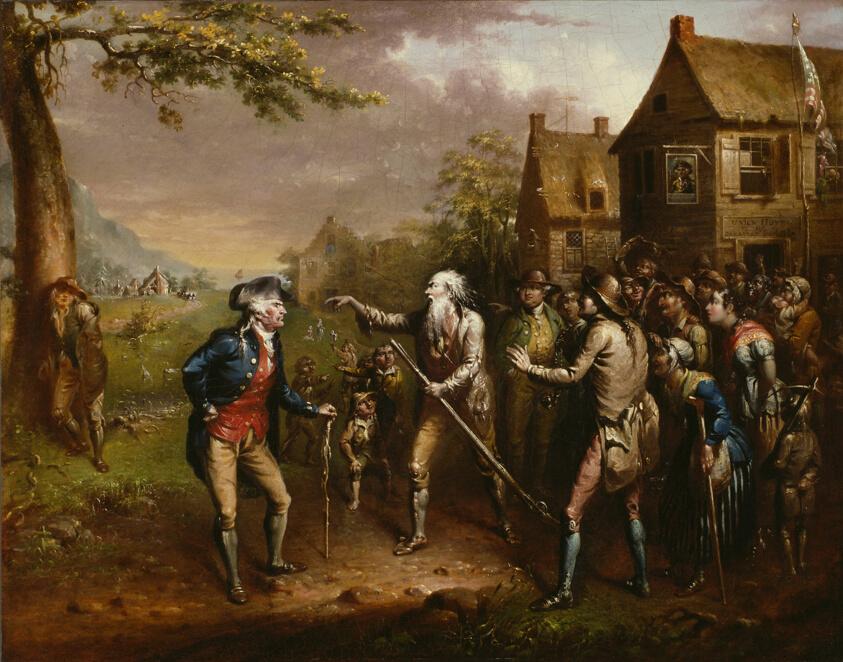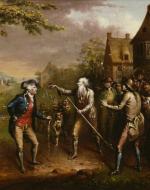Created by Emmett Gill on Sun, 03/17/2024 - 22:17
Description:
The American Revolution, being one of the most momentous events in American history, had a major impact upon how Americans came to view themselves as a society. The development of this united perspective of American culture developed over time; what was the revolution’s impact around the time shortly after the colonies’ triumph? Washington Irving’s “Rip van Winkle” provides a perspective on this through its titular character, a resident of the Hudson River Valley’s Catskill Mountains in southeastern New York.
During the eighteenth century, the state was still rural. Dutch settlers had been developing outposts such as New Amsterdam alongside other settlements for decades and had established a settlement within the Hudson Valley that maintained the Dutch styles and cultures despite the rivalry with English settlers (Larson). Dutch settlements, despite being so isolated from the American revolution, still felt the ripple effect it had across the colonies—especially after the English began to move in around the mid-eighteenth century. Rip Van Winkle experiences this for himself, as he returns home after falling asleep for twenty years.
The very character of the people seemed changed. There was a busy, bustling, disputatious tone about it, instead of the accustomed phlegm and drowsy tranquillity. [...] In place of these, a lean, bilious-looking fellow, with his pockets full of handbills, was haranguing vehemently about rights of citizens—elections—members of congress— liberty—Bunker's Hill—heroes of seventy-six—and other words, which were a perfect Babylonish jargon to the bewildered Van Winkle. (Irving)
Rip managed to miss the entirety of the American Revolution, and as a result understood very little of how the new American establishments have changed everyone’s ways of life. This reappearance is depicted above, and aptly displays the changes that came from the Revolution. The people have become quite fond of the newly established democracy and were quite avid in supporting it alongside their beliefs. Surprisingly, however, he cares very little about the success of the Revolution. “Rip, in fact, was no politician; the changes of states and empires made but little impression on him; but there was one species of despotism under which he had long groaned, and that was—petticoat government” (Irving). While he is saddened by the loss of many of his friends, he is ignorant of his newfound status as an American. To Rip, the thing that makes him a free man is the fact that his wife cannot nag him anymore.
Works Cited
Irving, Washington. “Rip van Winkle.”
Larson, Neil. “The Colonial Era (1609-1783)”. Colonialera - HRVI, www.hudsonrivervalley.org/colonialera. Accessed 11 Mar. 2024.
Quidor, John. Depiction of Rip Van Winkle. 1829, https://upload.wikimedia.org/wikipedia/commons/1/1f/Depiction_of_Rip_Van_Winkle_by_John_Quidor_%281829%29.jpg
Copyright:
Associated Place(s)
Timeline of Events Associated with The Revolution vs. The People (Rip van Winkle)
Part of Group:
Featured in Exhibit:
Artist:
- John Quidor


